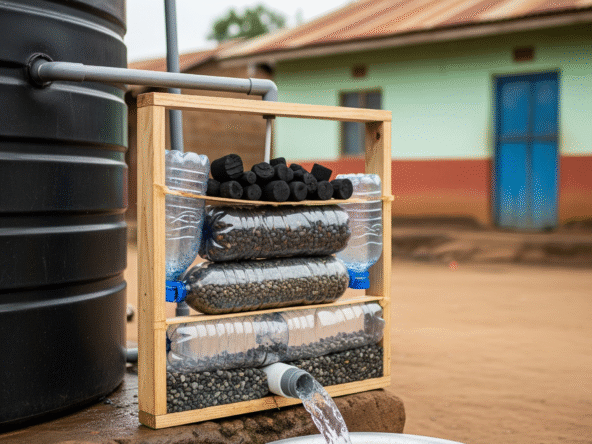Access to clean water and decent shelter remains a top priority for many Kenyans. For those constructing houses below one million in Kenya, selecting the right water tank is a practical investment that supports long-term sustainability, cost control, and day-to-day convenience.
This guide outlines how to choose budget-friendly water storage solutions, integrate them into small housing developments, and enhance long-term property value through smart planning.
1. Why Water Tanks Are Essential in Budget Homes
In most peri-urban and rural areas, water supply is inconsistent. Budget homes, particularly those constructed on low-cost plots, may not be connected to piped systems. Water tanks help to:
- Reduce reliance on unpredictable municipal or borehole water
- Store enough water during the dry season
- Fit seamlessly with minimalistic architectural designs
These considerations are crucial when working within the constraints of houses below one million in Kenya.
2. How to Choose the Right Water Tank
When selecting a water tank, weigh the following factors:
- Capacity: A 5,000 to 10,000-liter tank is sufficient for an average household
- Material: Plastic tanks are most common and cost-effective, while modular steel or masonry tanks suit special use cases
- Cost vs durability: Opt for a tank with UV protection and a strong base to avoid replacement in the near future
For detailed options by brand and pricing, visit Top Water Tank Brands in Kenya.
3. Installing Water Tanks in Budget Housing Projects
Installation should be both functional and cost-conscious. Key tips include:
- Place the tank on a level concrete or compacted surface
- Connect your roofing system using basic gutters to allow for rainwater harvesting
- Include a first-flush diverter to eliminate roof debris before water enters the tank
- Direct overflow away from your house’s foundation to prevent erosion
This type of setup aligns well with compound paving alternatives that help manage water runoff on small or shared plots.
4. How to Integrate Tanks with Affordable Housing
To stay within budget while maintaining functionality:
- Position the tank near kitchen or bathroom areas to reduce plumbing costs
- Choose a slim or round tank model for narrow compounds often used in budget fencing designs
- Ensure access is easy for cleaning and maintenance without interfering with compound features
This integration is crucial when building compact, efficient homes targeted at first-time buyers or renters.
5. Maintenance and Long-Term Savings
A well-installed water tank saves money and protects your home over time:
- Protects walls and foundations from water damage by controlling overflow
- Lowers the cost of water treatment when tanks are sealed and maintained
- Increases overall property value by offering a practical utility feature
To complement your water system, consider related features such as budget-friendly garden lighting setups and how to integrate composting.
Combining water storage with affordable construction is no longer optional—it’s essential. Whether you’re investing in self-built homes, rentals, or family plots, choosing and placing the right tank adds durability, convenience, and value. Plan early, integrate water storage with your compound layout, and you’ll reduce long-term maintenance while increasing appeal to future buyers or tenants.
Explore More Articles:


